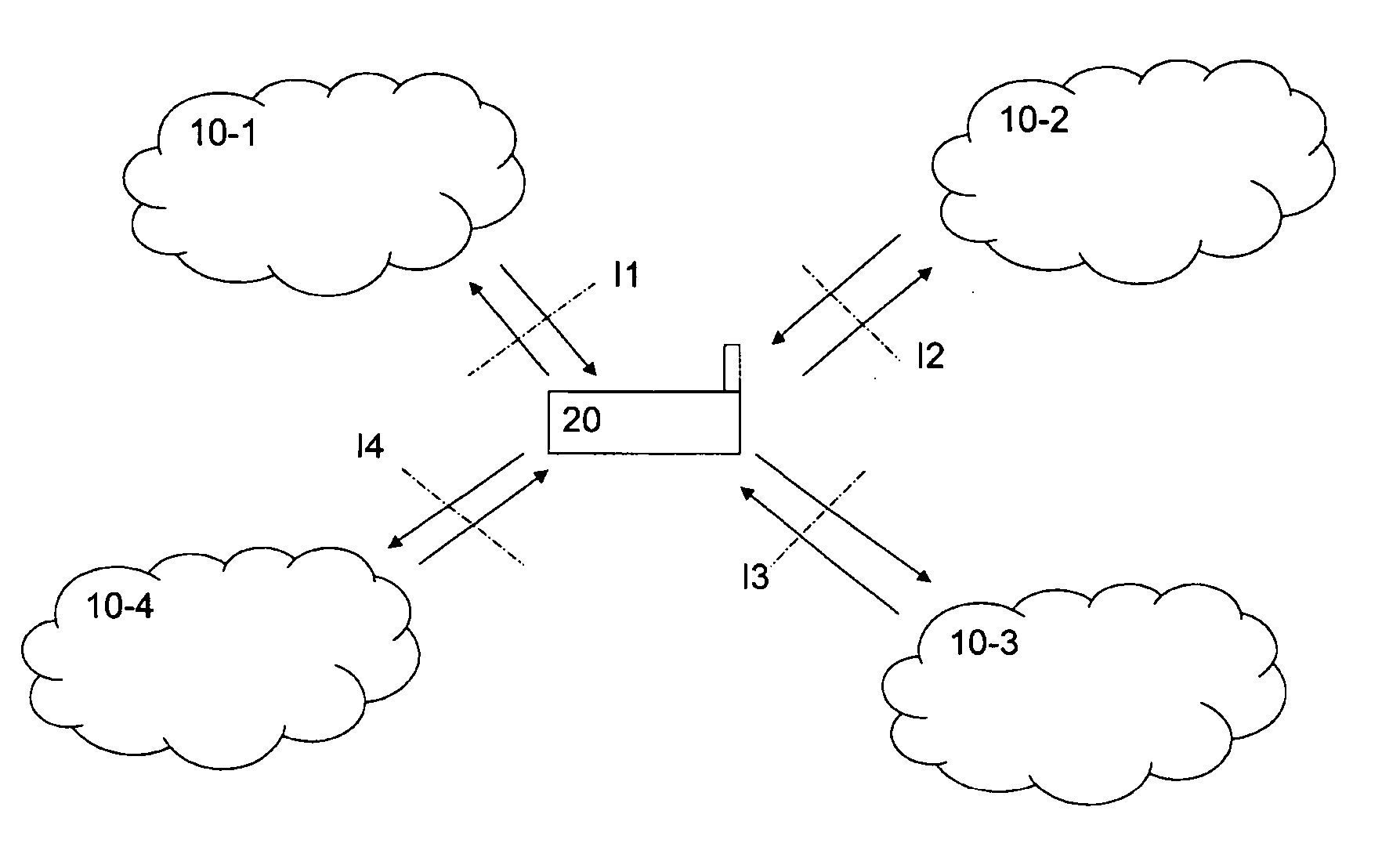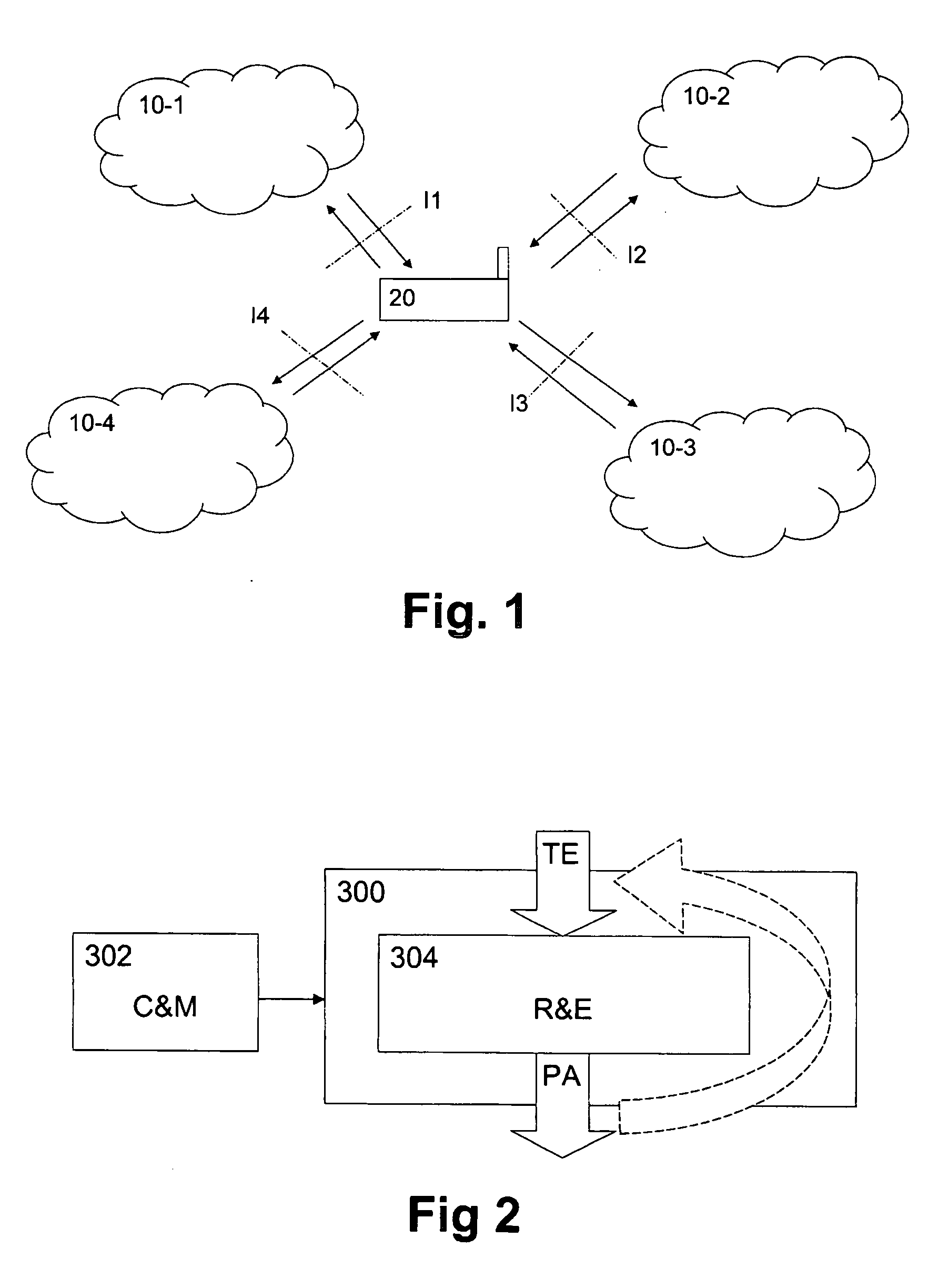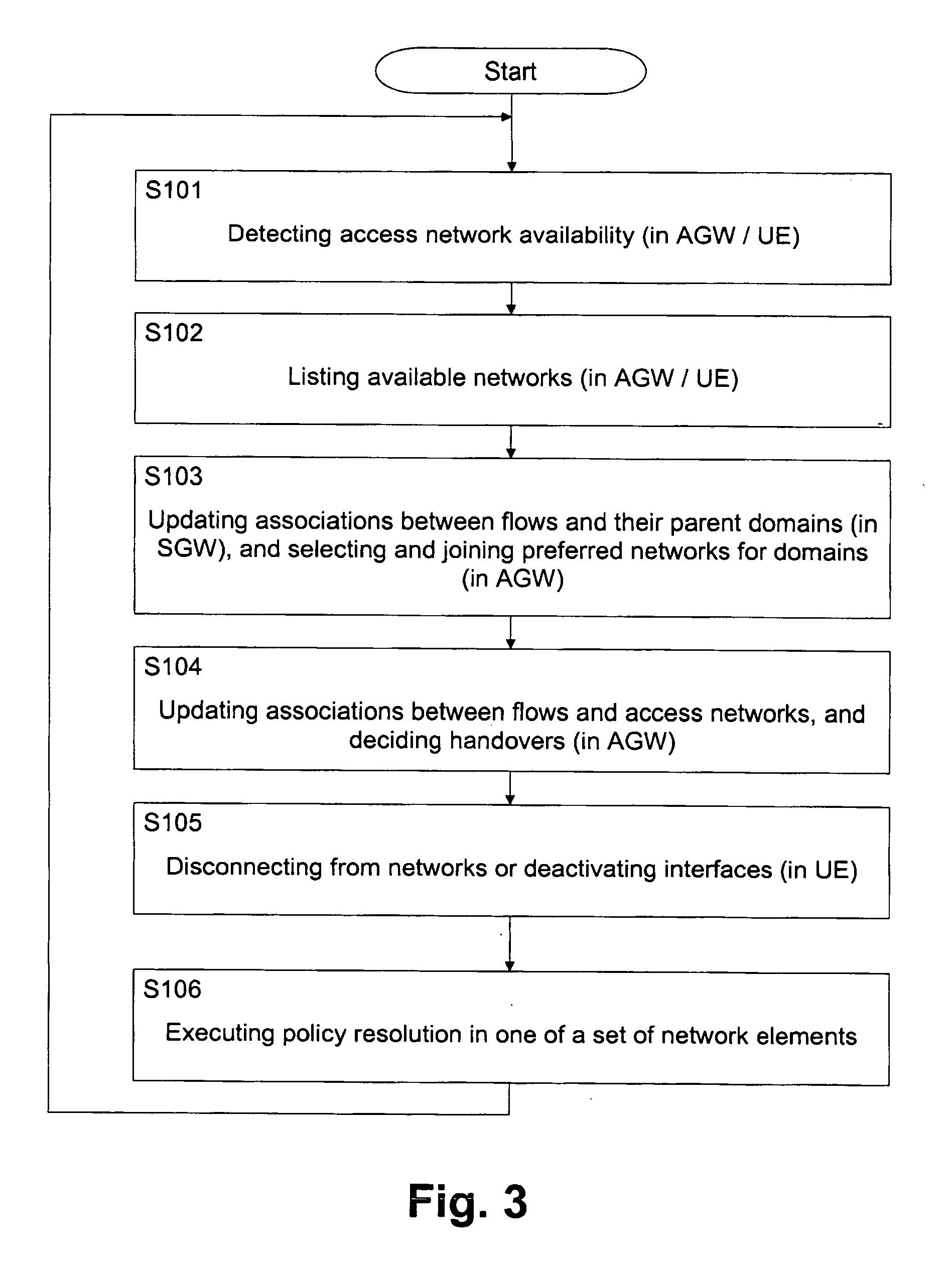Modular network-assisted policy resolution
a technology of policy resolution and module network, applied in the field of multi-access policy resolution, can solve the problems of complex policies involved in this task, resolution delays, deep parallel sets of conditionals, etc., and achieve the effects of reducing the consumption of terminal resources, looping and oscillation, and reducing the delay of resolution
- Summary
- Abstract
- Description
- Claims
- Application Information
AI Technical Summary
Benefits of technology
Problems solved by technology
Method used
Image
Examples
first embodiment
[0056] multi-access policy resolution is divided into clearly separate stages that handle specific types of trigger events and perform specific types of policy actions, while each policy resolution round goes through the stages in a chronological order.
[0057]FIG. 3 shows a flow diagram of the stages of a resolution round according to the first embodiments. The set of trigger events is frozen before each round so that if there are trigger events that started after the round started, they will be postponed to the next resolution round. The policy resolution engine, as shown in FIG. 2, receives trigger events TE, including both configuration and connectivity events, from external components and classifies them based on their types. These events are received over a certain short period of time that is long enough for clearly interrelated events to take place.
[0058] According to FIG. 3, the resolution rounds consist of a first step or stage S101
[0059] In which access network availabili...
second embodiment
[0084]FIG. 5 shows a flow diagram of the network-assisted policy resolution procedure wherein the left-hand column of FIG. 5 indicates processing steps performed at the access network (AN), and the right-hand column indicates processing steps performed at the terminal device (UE). The processing block indicated middle portion of FIG. 5 relates to a processing which involves both access network and terminal device.
[0085] The access network (AN) maintains a relevant portion of the user's up-to-date preference information, and additionally it may have compatible definitions for all access points and network edge segments in the location. In step S201, the access network identifies each user's flows and is able to execute a proxy policy resolution process in step S202 in order to select an appropriate access point for the flow, using the user's preference information and its own access network definitions. The policies are enforced either transparently by the access network (as indicat...
PUM
 Login to View More
Login to View More Abstract
Description
Claims
Application Information
 Login to View More
Login to View More - R&D
- Intellectual Property
- Life Sciences
- Materials
- Tech Scout
- Unparalleled Data Quality
- Higher Quality Content
- 60% Fewer Hallucinations
Browse by: Latest US Patents, China's latest patents, Technical Efficacy Thesaurus, Application Domain, Technology Topic, Popular Technical Reports.
© 2025 PatSnap. All rights reserved.Legal|Privacy policy|Modern Slavery Act Transparency Statement|Sitemap|About US| Contact US: help@patsnap.com



